It’s a question that’s been on many people’s minds: how do tiny houses get water? It seems like a silly question, but it’s actually quite complex. There are a few different ways to get water into a tiny house, and each method has its own set of benefits and drawbacks. This blog post will explore the different ways to get water into a tiny house and discuss the pros and cons of each approach. Stay tuned – it’s going to be a fascinating journey!
What is a tiny house, and just how tiny is it?
A tiny house, also known as a “micro-home” or “tiny dwelling” is typically defined as any home that is 400 square feet or less in size. While the exact measurements of a tiny house can vary greatly from one builder to another, many tiny homes are built on trailers and measure between 8×20 to 8×40 feet. Tiny houses come in all shapes and sizes, from A-frame cabins to traditional cottages, but they all share some common features such as small footprints and efficient use of space.
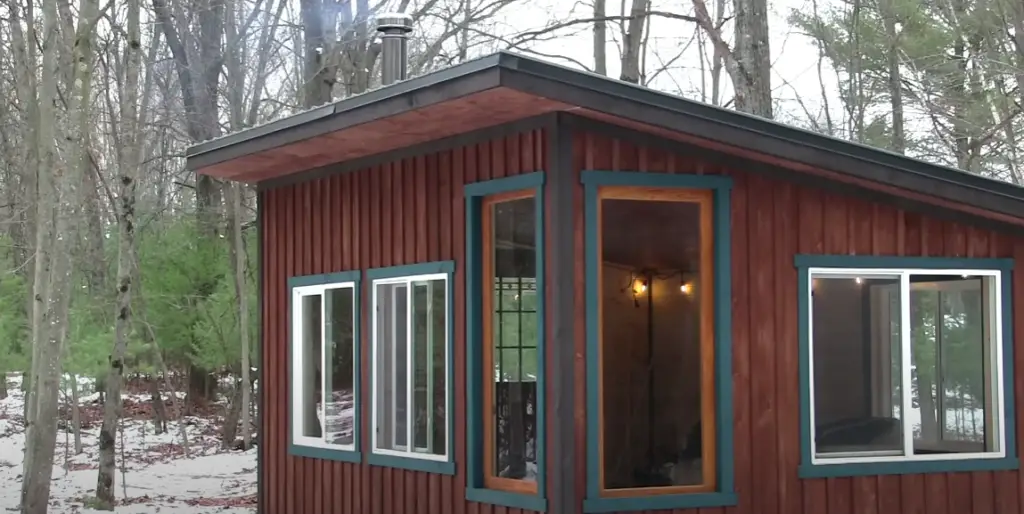
Despite their diminutive size, tiny houses provide ample storage for their occupant’s thanks to clever interior design solutions like lofted bedrooms and hidden compartments. Although tiny homes lack the spaciousness of traditional homes, they make up for it in their affordability – the average tiny house costs between $20,000 and $50,000. Additionally, their smaller footprints mean that owners can enjoy a life of freedom with fewer obligations and less environmental impact. In short, living in a tiny house offers everything you need to live comfortably while owning less stuff.
In recent years, the tiny house movement has been gaining more and more traction as people have realized just how much potential these micro-homes have to offer. Not only are they affordable and require little upkeep, but they also provide an opportunity to downsize one’s lifestyle while still enjoying all the comforts of home. People who choose to live in a tiny house benefit from reduced stress and a greater sense of freedom.
Whether you’re downsizing or just starting, a tiny house could be the perfect fit for your needs. From minimalist A-frames to luxe cottages on wheels, there’s something for everyone in this growing movement. So, if you’re ready to make the move into a micro-home, it’s time to explore all the possibilities that living small has to offer [1]!
The benefits of living in a tiny house
Freedom
Living in a tiny house gives you the freedom to travel and explore. With a tiny home, you don’t have to worry about renting out your property or hiring someone to take care of it while you are away. You can just move your tiny house wherever you want and stay there for as long as you like.
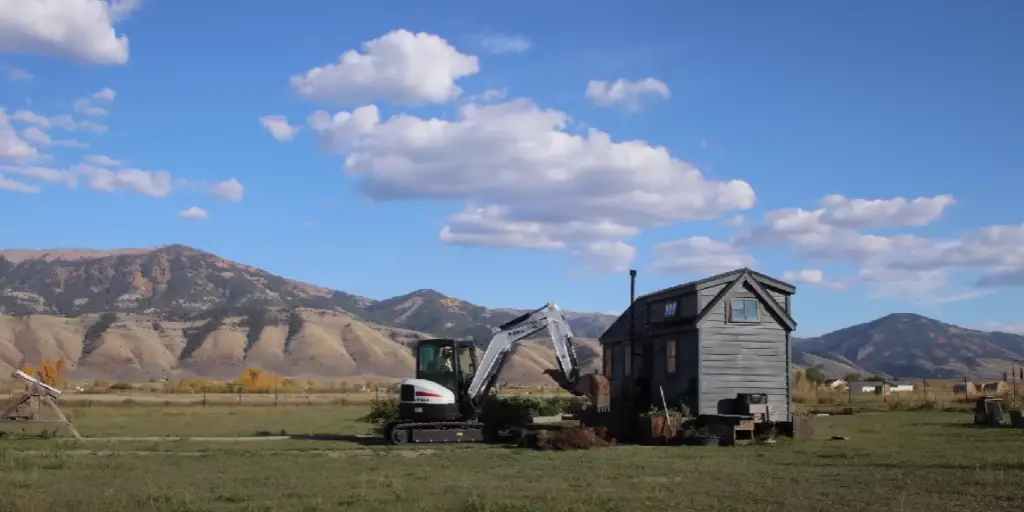
Reduces Costs
The cost of living in a tiny house is much lower than that of owning a traditional home. Not only do they require less space but they also use fewer resources so utility costs are usually very low when compared to those of larger homes. Additionally, many people choose to build their own tiny houses which drastically reduces construction costs.
Environmental Impact
Tiny houses generally have a much smaller environmental footprint than traditional homes. They use fewer materials in their construction, require less energy for heating and cooling, and often utilize green building techniques to improve efficiency even further. For those looking to reduce their impact on the environment, tiny houses are an excellent option.
Flexibility
Living in a tiny house gives you the flexibility to move quickly if needed. If your job requires relocation or you just want to try living somewhere new then all you have to do is pack up your tiny home and take it with you. This makes it easy to experience different parts of the country without having to worry about real estate transactions or long-term leases.
Creative Expression
Tiny houses provide a unique opportunity for creative expression. With limited space, every inch of the home must be maximized and decorated to fit the personality of its occupant. This provides a great opportunity to showcase your creativity and design skills while also providing a comfortable place to call home.
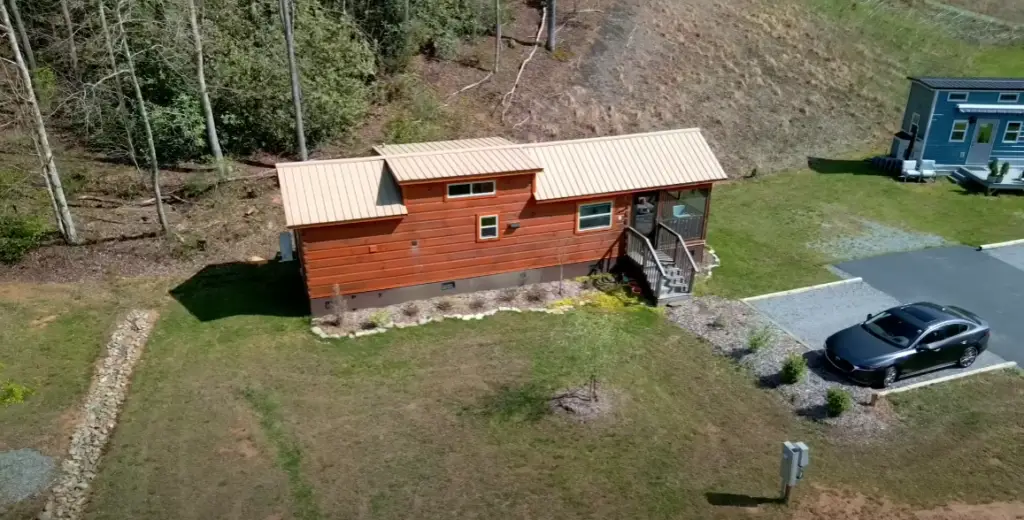
Simplicity
Living in a tiny house helps eliminate clutter and encourages minimalism. With fewer belongings comes more freedom, as you won’t have to worry about finding storage for all of your possessions or spending time managing them. Instead, you can focus on what truly matters and enjoy life’s simple pleasures.
Time Spent Outdoors
Since tiny houses typically don’t have a lot of extra room, people who live in them tend to spend more time outdoors. This allows you to get away from the hustle and bustle of city life and enjoy the natural beauty of your surroundings. From camping trips to beach days, living in a tiny house opens up plenty of opportunities for outdoor exploration.
Community
The tiny house movement has spawned an entire community of like-minded individuals who are passionate about minimalism and sustainable living. Joining this community gives you access to support networks and invaluable advice on how to make the most out of living small [2].
Options for Water Sources in Your Tiny Home
No Water Source
If you decide that you do not want to install any kind of water source for your tiny home, there are a few options available. You can use bottled or jugs of water brought from outside sources, like the store. Additionally, if you have access to a nearby lake or stream, you can also collect and filter your water for use in your tiny home.
Gray Water Sources
An alternative option is using gray water sources. These are wastewater sources such as showers and sinks that contain used water from washing and showering. This type of water can be collected and filtered so that it is safe to drink. This option requires the installation of a small system with pumps and filters to ensure that the water is safe for consumption.

Rainwater Collection
You can also install a system for collecting and storing rainwater. This option requires the installation of gutters that collect rain from the roof and channel it into a storage tank or barrels. The water stored in this way must be filtered before use, but it is a reliable source of clean water for your tiny home.
Use of Tanks and Barrels
Water can be stored in the tank and filtered before use. Additionally, you can also make use of large barrels to store water that is collected from outside sources such as lakes or streams. This water must also be filtered before use. The average size of a water tank or barrel will depend on the size of your tiny home. For example, if you have a small home, then you may only need one or two barrels to store enough water for your needs.
Using Public Utilities
The last option is connecting to a public utility system such as the city water supply. This requires that you install piping and other infrastructure to access the public utility water source. This can be expensive, but it ensures that you will always have a reliable source of clean drinking water available.
RV Hookup
If you are planning to move your tiny home frequently, then you may want to consider installing an RV hookup. This will allow you to connect your tiny home directly to an external water source such as a campground or other location with access to clean drinking water. It is important to note that this option requires the installation of specialized equipment and should be done by a professional.
Tank + Hookup Combo
Consider a combination of the two options above. This option involves installing both a water tank and an RV hookup in your tiny home. This provides you with the flexibility of using either option depending on where you are located [3].
Water Delivery Services
Finally, you can always look into subscribing to a water delivery service in your area. This will ensure that your tiny home has access to fresh drinking water regularly without having to worry about installation or filtering systems.
How Much Water Does A Tiny House Use?
Generally speaking, a tiny house uses much less water than a traditional home. Depending on your lifestyle and the size of your tiny house, you can expect to use about 50-70 gallons per day for all of your needs, ranging from showering and toilet flushing to washing dishes and laundry. This number is significantly lower than the average American’s daily water usage which is closer to 100 gallons per day.
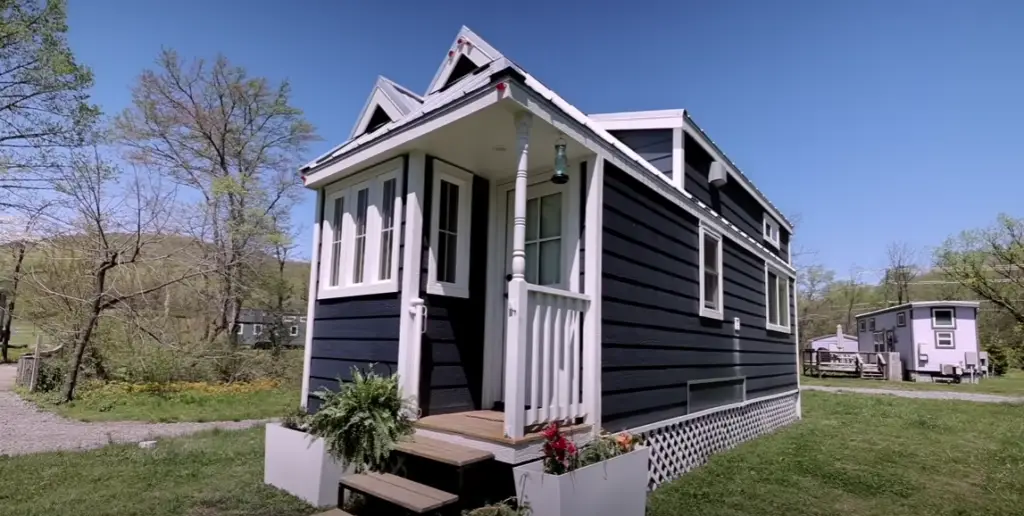
A key factor in reducing water consumption in a tiny house is having efficient plumbing fixtures. Low-flow showerheads, toilets, faucets, and other fixtures help reduce overall water use by up to 40%. Additionally, some people choose to install greywater systems which collect used sink or shower water before it leaves the house and redistribute it to be used again. This helps reduce water consumption even further.
Finally, be sure to pay attention to the materials you use for your tiny house plumbing system. Copper, plastic, and PEX are all strong options for pipes and fittings. Avoid using lead pipes as they can contaminate your water supply with hazardous chemicals over time. With proper planning and efficient plumbing fixtures, you can lower your overall daily water usage in a tiny house significantly [4].
How Does The Plumbing Work In a Tiny House?
Generally speaking, most tiny homes will have a greywater tank, which collects all of the wastewater from your sinks, showers, and toilets. This water then needs to be emptied at designated dumping stations or an RV park’s sewage system.
Water supply for a tiny home is usually provided by either a pressurized potable water tank located on the exterior of the house or a direct connection to city water service. The pressure tank works in much the same way as those found in many conventional homes with one major difference: it uses pumps that run off electricity from batteries or some other energy source instead of city power.
If a direct connection to city water is available, then the homeowner will need to install a pressure regulator and backflow prevention valve. This prevents contaminated water from flowing backward into the main water supply. The house also needs an on-demand water heater as traditional tank-style heaters are too big for most tiny houses. Additionally, some homeowners may opt for composting toilets instead of more traditional flushing systems. These use very little or no water at all but may come with additional challenges if used in certain climates or areas with specific zoning laws.
FAQ
What are the three negative features of a tiny house?
The three most common negative features of tiny houses are:
- Limited Space – Tiny houses have very limited space, which can be difficult for those used to living in a larger home. This usually means that storage space is minimal and items must be kept to a minimum to avoid clutter.
- Lack of Amenities – Many tiny homes lack the amenities found in traditional homes such as running water and full bathrooms.
- In some cases, this means relying on outdoor sources like showering at parks or using basic toilets or composting toilets.
- Mobility Issues – Unless you have an RV-style tiny house with wheels, it may not be possible to move your tiny home once it has been set up due to its size and weight. This means that if you want to relocate, it may be necessary to have it dismantled and rebuilt elsewhere.
In addition, tiny houses often do not meet the standards required by local building codes which can limit their use in certain areas. Despite these disadvantages, many people find tiny houses an attractive option as they are an affordable way to downsize or live a more sustainable lifestyle. The key is understanding the tradeoffs involved before making a decision.
Are there any benefits of living in a tiny house?
Yes! Living in a tiny house offers several unique advantages compared to traditional housing:
- Financial Savings – Tiny houses generally cost much less than traditional homes, resulting in significant financial savings over time.
- Reduced Environmental Impact – Tiny houses tend to use much fewer resources than traditional homes, resulting in a smaller environmental footprint.
- Flexible Locations – Many tiny homes are designed to be mobile and can easily be moved to different locations with relative ease. This makes it possible to live in a new place without having to buy or rent another home.
- Creativity & Customization – Due to the limited space, tiny house owners often have the opportunity to get creative with their design and customize their living space.
- Simplicity & Minimalism – With minimal possessions and space constraints, tiny house living encourages a simplified lifestyle that reduces clutter and makes it easier to focus on what really matters most in life.
How much water do you need for a tiny house?
The amount of water needed for a tiny house will depend on the size of your home and how it is set up. Generally, you will need at least 10 gallons per week for basic needs like drinking, washing dishes, and showering. However, if you are using a composting toilet or greywater system then your water needs may be significantly lower. It’s also important to consider local regulations when setting up your water system to ensure that it complies with any relevant rules or restrictions.
What kind of appliances can I use in my tiny house?
Tiny houses typically have very limited space so it is important to choose appliances wisely. Smaller-sized models designed specifically for small spaces are usually the best option. This includes things like mini-fridges, microwaves, portable washers and dryers, and other compact appliances. You may also want to consider energy-efficient models that use less electricity or water. Additionally, some tiny house owners opt for basic items like hot plates instead of full kitchens with ovens and stoves. Ultimately, the type of appliances you choose will depend on your lifestyle and needs.
What kinds of materials are best for building a tiny house?
The best materials for building a tiny house will depend on your budget as well as the climate in which it will be located. Generally speaking, lightweight materials such as wood or aluminum framing are preferred since they can help keep construction costs down while providing strong structural support. Additionally, materials like sheetrock, insulation, and weather-resistant siding can help protect against harsh weather conditions. Lastly, it’s important to make sure that any materials you use to meet local building codes or regulations.
How do people shower in a tiny house?
Showering in a tiny house can be tricky since there is limited space for a shower and/or bathroom. One option is to use an outdoor shower that is attached to the side of the home, which can be covered with a tarp or privacy fence. Alternately, some tiny homes are equipped with showers that fit into tight areas by utilizing folding doors or shower stalls that collapse against the wall when not in use. Other homeowners opt for portable camping-style showers or even tubs that double as storage spaces during the day. Ultimately, it’s important to choose a solution that works best for your lifestyle and needs.
Useful Video: Tiny House Utilities—How Do They Work? | Electricity, Water, & Gas
Conclusion
Tiny houses can get water, power, and sewer capabilities with the right preparation and work. The benefits of living in a tiny house are numerous, from the flexibility it provides to its lower impact on the environment. While there may be some challenges to maneuvering these systems into a tiny house, it is possible with some research and careful planning. With all of this in mind, tiny houses offer an exciting lifestyle option full of potential for those interested in exploring alternative housing solutions.
References:
- https://www.cypris.blog/tiny-homes-are-changing-how-we-live/
- https://abcnews.go.com/Business/living-tiny-home-benefits-drawbacks/story?id=17742823
- https://bbtinyhouses.com/4-ways-to-get-water-into-your-tiny-home/
- https://mobiletinyhouse.ro/how-much-water-does-a-tiny-house-use/





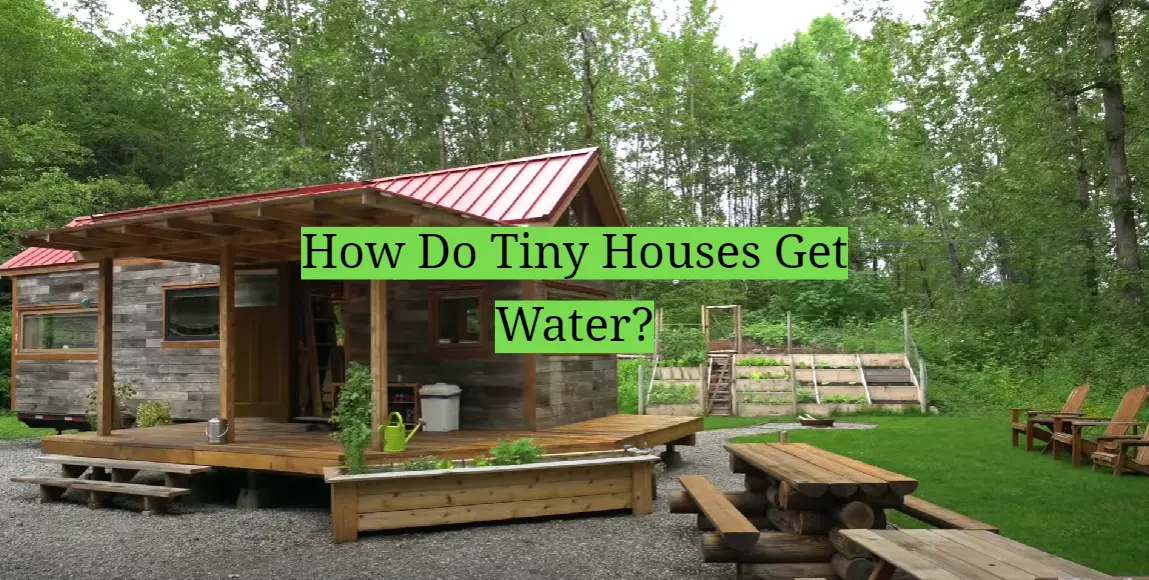





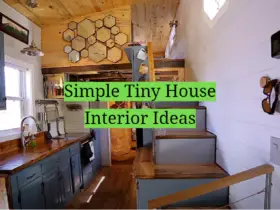
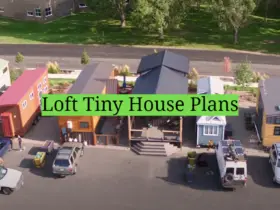
Leave a Reply